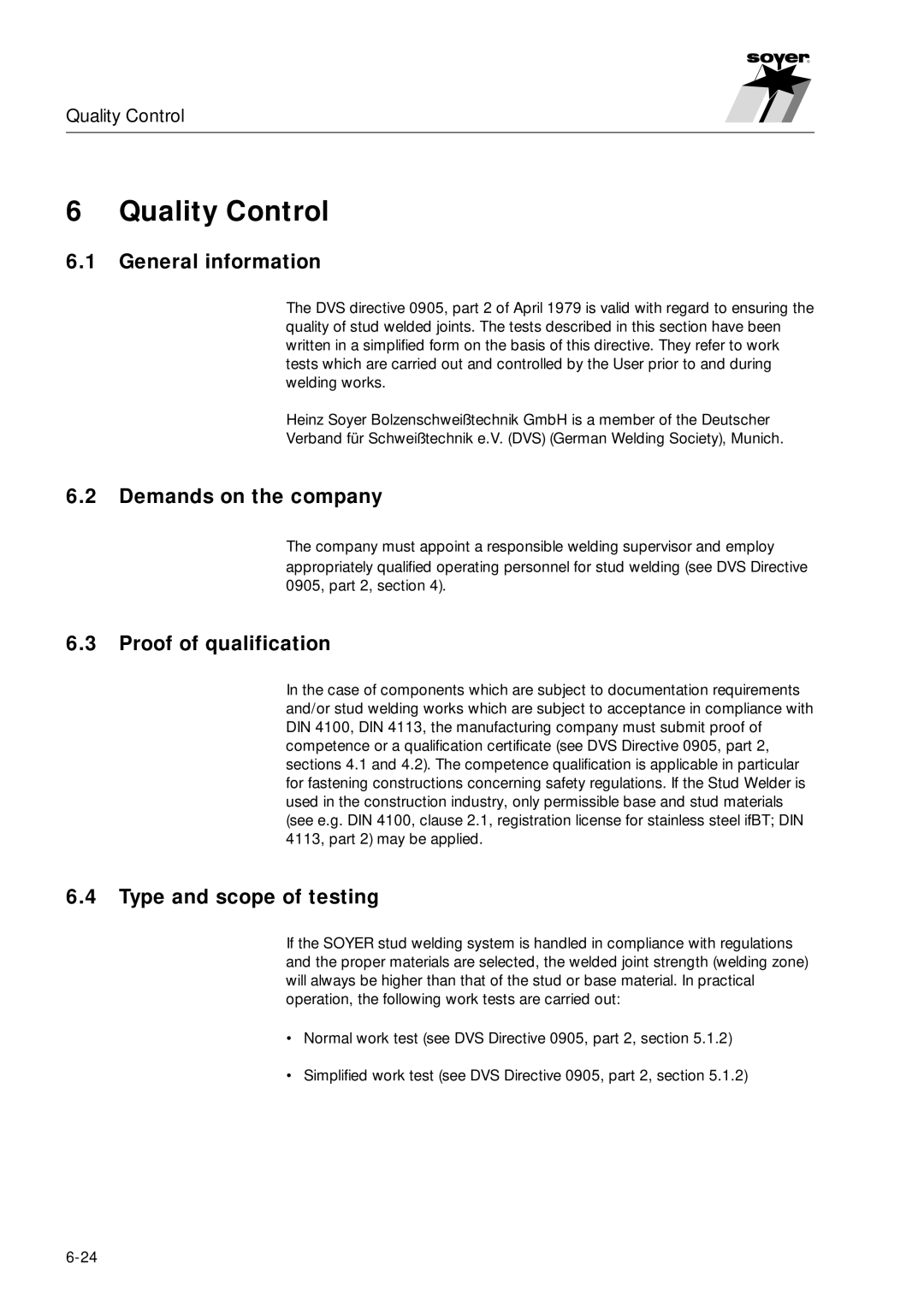
R
Quality Control
6 Quality Control
6.1General information
The DVS directive 0905, part 2 of April 1979 is valid with regard to ensuring the quality of stud welded joints. The tests described in this section have been written in a simplified form on the basis of this directive. They refer to work tests which are carried out and controlled by the User prior to and during welding works.
Heinz Soyer Bolzenschweißtechnik GmbH is a member of the Deutscher
Verband für Schweißtechnik e.V. (DVS) (German Welding Society), Munich.
6.2Demands on the company
The company must appoint a responsible welding supervisor and employ appropriately qualified operating personnel for stud welding (see DVS Directive 0905, part 2, section 4).
6.3Proof of qualification
In the case of components which are subject to documentation requirements and/or stud welding works which are subject to acceptance in compliance with DIN 4100, DIN 4113, the manufacturing company must submit proof of competence or a qualification certificate (see DVS Directive 0905, part 2, sections 4.1 and 4.2). The competence qualification is applicable in particular for fastening constructions concerning safety regulations. If the Stud Welder is used in the construction industry, only permissible base and stud materials (see e.g. DIN 4100, clause 2.1, registration license for stainless steel ifBT; DIN 4113, part 2) may be applied.
6.4Type and scope of testing
If the SOYER stud welding system is handled in compliance with regulations and the proper materials are selected, the welded joint strength (welding zone) will always be higher than that of the stud or base material. In practical operation, the following work tests are carried out:
•Normal work test (see DVS Directive 0905, part 2, section 5.1.2)
•Simplified work test (see DVS Directive 0905, part 2, section 5.1.2)
